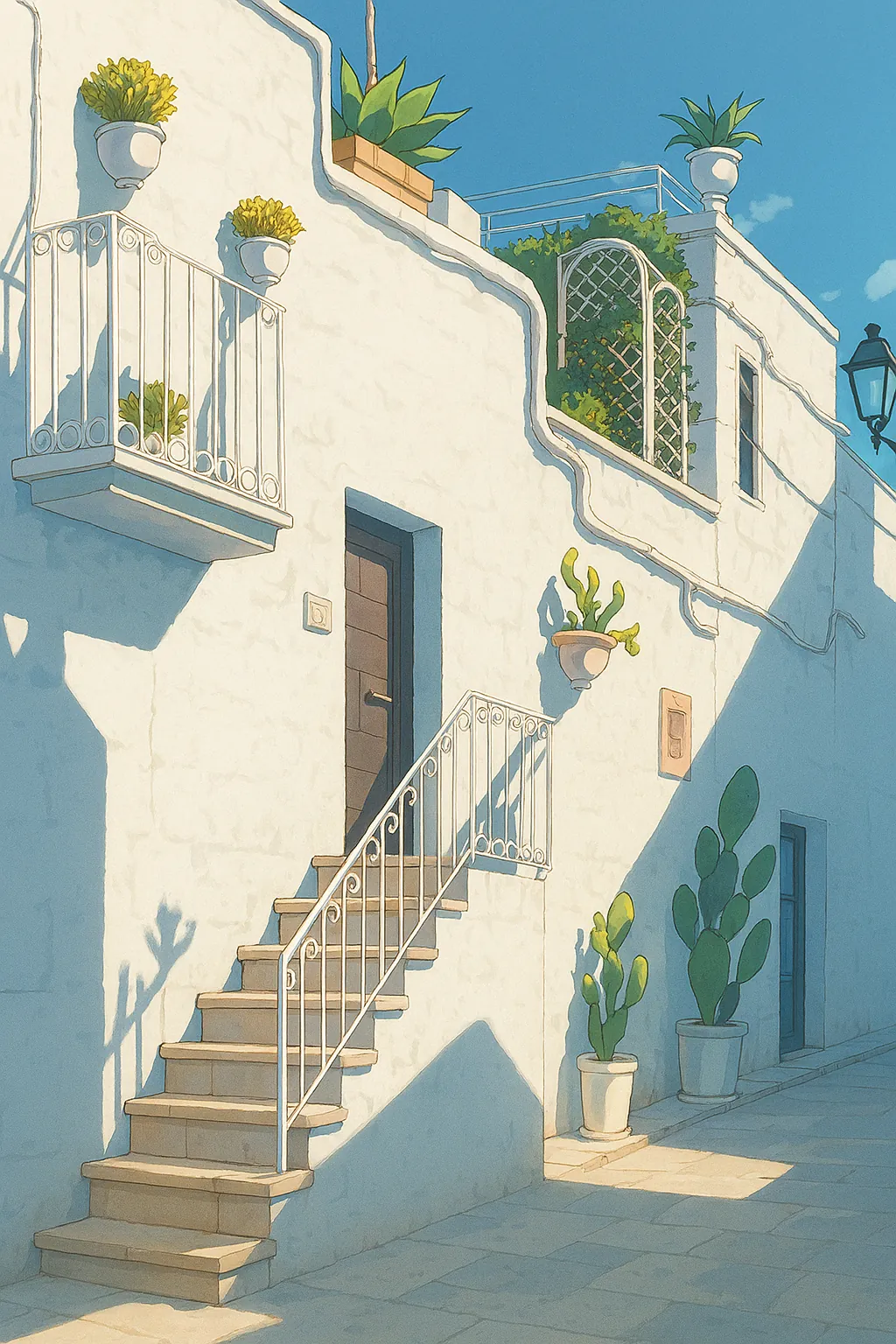Wednesday, March 4, 2026
GPT-4o Image Generation: Revolutionizing Visual Communication
Posted by

GPT-4o Image Generation: Revolutionizing Visual Communication
Image generation has evolved dramatically over the past few years, from producing blurry, distorted images to creating photorealistic scenes. However, most generative models have focused primarily on creating visually stunning but often impractical imagery. OpenAI's latest advancement, GPT-4o, takes a fundamentally different approach by integrating image generation as a native capability within its language model, resulting in a tool that's not just beautiful but genuinely useful.
The Native Multimodal Approach
At the core of GPT-4o's image generation capabilities is a natively multimodal model. Rather than treating text and images as separate domains that require translation between them, GPT-4o directly models the joint distribution of text, pixels, and sound within one comprehensive autoregressive transformer.
This approach offers several advantages:
- Image generation augmented with vast world knowledge
- Next-level text rendering
- Native in-context learning
- Unified post-training stack
By training on the joint distribution of online images and text, GPT-4o learns not just how images relate to language, but how they relate to each other. Combined with aggressive post-training, the resulting model demonstrates remarkable visual fluency.
Key Capabilities
Text Rendering
One of the most significant limitations of previous image generation models has been their struggle with text. GPT-4o excels at accurately rendering text within images, making it possible to create visuals that communicate precise information.
From street signs to menus and wedding invitations, GPT-4o can generate images where text is not just legible but properly formatted and contextually appropriate. This capability transforms image generation from a purely creative tool into a practical medium for visual communication.
As the OpenAI team aptly puts it: "A picture is worth a thousand words, but sometimes generating a few words in the right place can elevate the meaning of an image."
Multi-turn Generation
Because image generation is native to GPT-4o, users can refine images through natural conversation. The model builds upon images and text in chat context, ensuring consistency throughout iterations.
This is particularly valuable when designing characters, creating storyboards, or developing visual concepts that require multiple refinements. Unlike traditional image generation workflows that treat each prompt as a separate task, GPT-4o maintains context and coherence across multiple generations.
For example, if you're designing a video game character, the character's appearance remains consistent across iterations as you refine details like clothing, accessories, or environmental context.
Instruction Following
GPT-4o's image generation follows detailed prompts with remarkable attention to detail. While other systems typically struggle with managing 5-8 objects in a scene, GPT-4o can handle 10-20 different objects with their specific traits and relationships.
This tighter binding of objects to their attributes allows for better control over the generated images. Whether you need to create a grid of specific objects, visualize an empty city, or demonstrate abstract concepts like an "invisible elephant" through its environmental effects, GPT-4o can follow these complex instructions with precision.
In-context Learning
One of the most powerful aspects of GPT-4o is its ability to analyze and learn from user-uploaded images. The model seamlessly integrates details from these images into its context to inform subsequent image generation.
This capability allows users to provide visual references that guide the model's output. For instance, you could upload reference images for a vehicle design, and GPT-4o would incorporate elements from those references into a new design that follows your specifications.
This feature bridges the gap between inspiration and creation, allowing users to communicate visual concepts more effectively than through text alone.
Example: From Mediterranean Snapshot to Anime Background
Consider a transformation example that demonstrates GPT-4o's versatile capabilities. The process begins with a beautiful photograph from Unsplash featuring a Mediterranean-style building with white walls and blue accents. While the original image was already visually appealing, this example explores GPT-4o's ability to transform existing imagery.

The first step involved converting the photograph into a cartoon-style background. The model maintained the essential architectural elements and color scheme while applying a stylized, animated aesthetic. The transformation was impressive—the building retained its recognizable features but now had a playful, illustrated quality perfect for creative projects.

Building on this initial transformation, the next step pushed the creative boundaries further. The cartoon background was enhanced with an anime cat character in the foreground. The model seamlessly integrated a cute anime-style cat that complemented the cartoon environment, demonstrating its ability to not only transform existing elements but also add new objects that maintain stylistic consistency.

This multi-step transformation process highlighted several of GPT-4o's strengths:
-
Understanding visual references: The model accurately interpreted the original photograph's key elements.
-
Style transformation: It successfully applied different artistic styles while preserving important visual information.
-
Contextual additions: The anime cat was appropriately scaled and positioned to look natural within the scene.
-
Multi-turn refinement: Each iteration built upon the previous one, maintaining consistency throughout the transformation process.
This example showcases how GPT-4o can serve as a powerful tool for creative professionals, content creators, and anyone looking to transform visual concepts through multiple iterations.
Comparison with Other Image Generators
GPT-4o's image generation capabilities represent a significant advancement over previous models, including OpenAI's own DALL-E (now referred to as their "legacy image generation model").
The most striking difference is GPT-4o's ability to accurately render text within images—a notorious challenge for AI image generators. This capability enables the creation of infographics, comics, storyboards, and other text-heavy visuals with unprecedented accuracy. As demonstrated in comparative tests, while DALL-E might understand the assignment to incorporate text, it often fails to render actual legible words, whereas GPT-4o produces correctly spelled text with real letters.
While dedicated image generation platforms like Midjourney or Leonardo offer more specialized features and faster processing, GPT-4o's integration of image generation within a conversational AI provides unique advantages:
- Contextual understanding: The model can reference previous conversations and images
- Seamless workflow: No need to switch between different tools for text and image tasks
- Improved character consistency: Better at maintaining visual coherence across multiple generations
- Transparency support: Ability to create PNG images with transparency for stickers and overlays
This integration of powerful language capabilities with image generation allows GPT-4o to excel at creating storyboards, comics, and infographics—tasks that require both visual creativity and textual accuracy.
Practical Applications
The capabilities of GPT-4o's image generation open up numerous practical applications:
-
Educational Content: Creating accurate diagrams, infographics, and visual explanations of complex concepts.
-
Product Design: Rapidly iterating on design concepts with consistent branding and detailed specifications.
-
Marketing Materials: Generating professional-quality visuals with properly rendered text for advertisements, social media, and promotional materials.
-
Technical Documentation: Illustrating processes, components, and systems with precise visual representations.
-
UI/UX Design: Visualizing interface elements and user flows with accurate text rendering and consistent styling.
-
Content Creation: Developing storyboards, character designs, and visual narratives with coherent progression across multiple images.
Availability and Limitations
In a significant development announced by Sam Altman on April 1, 2025, GPT-4o's image generation capabilities are now available to free users, not just paid subscribers. This democratization of access represents OpenAI's commitment to making advanced AI tools widely accessible. Importantly, this was not an April Fool's prank—the announcement was genuine, bringing powerful image generation to millions of users worldwide.
Free vs. Paid Access
While the core capabilities remain the same across both free and paid tiers, there are some important differences in usage limits:
- Free users: Limited to 3 image generations per day (resets at midnight UTC)
- Paid users: 50 generations/day with burst capacity up to 100 during low-traffic periods
As stated in OpenAI's documentation: "The GPT-4o model architecture enables tiered access while maintaining service quality for all users. Our priority balancing ensures free users get meaningful access without impacting paid tier performance."
Technical Foundations
The system leverages what OpenAI engineers call "Dynamic Resource Allocation" - automatically scaling GPU clusters based on demand patterns. This technical approach enables the tiered access model while maintaining quality of service.
This tiered approach allows casual users to experience GPT-4o's image generation while providing enhanced access to subscribers.
Current Challenges
Despite its impressive capabilities, GPT-4o's image generation isn't without limitations:
- Processing time: Image generation can take several minutes per image, significantly longer than text responses
- Server capacity: During peak periods, response times increase 300-500% (per OpenAI status page metrics). OpenAI's engineering blog notes: \
- Single image requests: Unlike some dedicated image generators, GPT-4o can only process one image per request
- Manual editing workflow: Changes require conversational requests rather than direct manipulation tools
The initial launch at the end of March 2025 was relatively quiet, but the feature quickly gained popularity, especially after becoming available to free users. The 'o' in GPT-4o stands for 'omni' (the Latin word for 'every'), reflecting its comprehensive capabilities across text, speech, video, and now image generation.
As Sam Altman hinted on April 2, 2025, further improvements are already in development: "Y'all are not ready for images v2..." suggesting that OpenAI continues to rapidly advance this technology.
The Broader Implications
The remarkable quality of GPT-4o's image generation raises important questions about the future of visual content. Traditional indicators for identifying AI-generated images—such as poorly drawn hands or nonsensical text—are becoming less reliable as the technology improves.
This advancement brings both opportunities and challenges:
- Creative democratization: More people can visualize their ideas without specialized artistic skills
- Professional concerns: Questions about the impact on illustrators and visual artists
- Content authenticity: Increasing difficulty in distinguishing between AI and human-created imagery
- Environmental considerations: The significant computational resources required for image generation
As AI development continues to accelerate, these considerations will become increasingly important for creators, consumers, and policymakers alike.
Whether you're excited by the creative possibilities or concerned about the implications, one thing is clear: GPT-4o's image generation capabilities represent a significant step forward in making advanced AI tools more accessible and useful for visual communication.